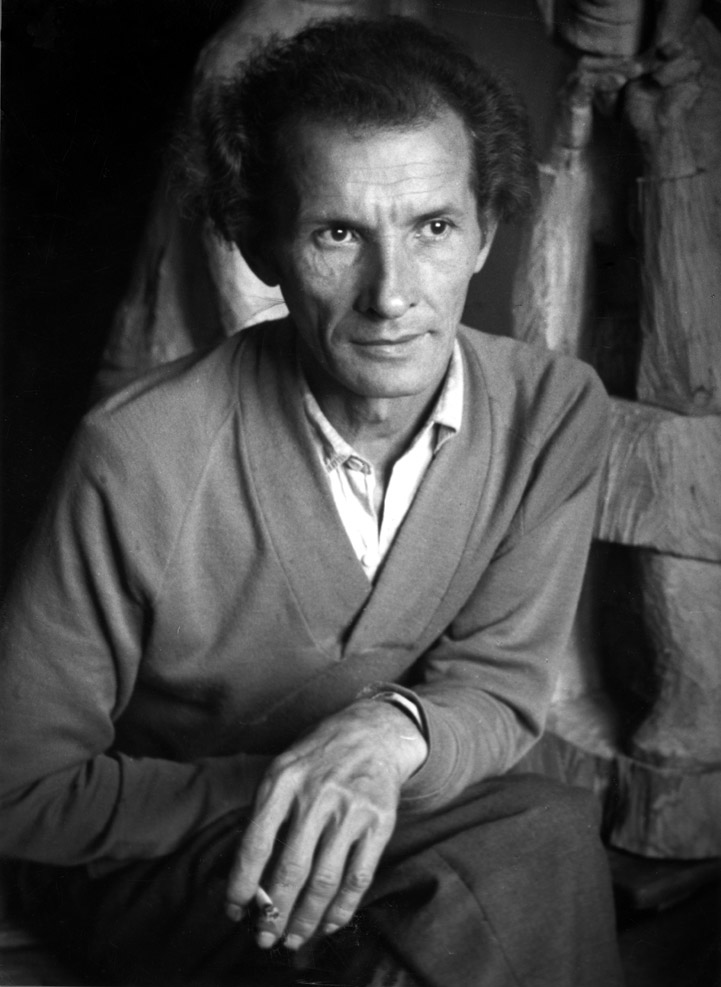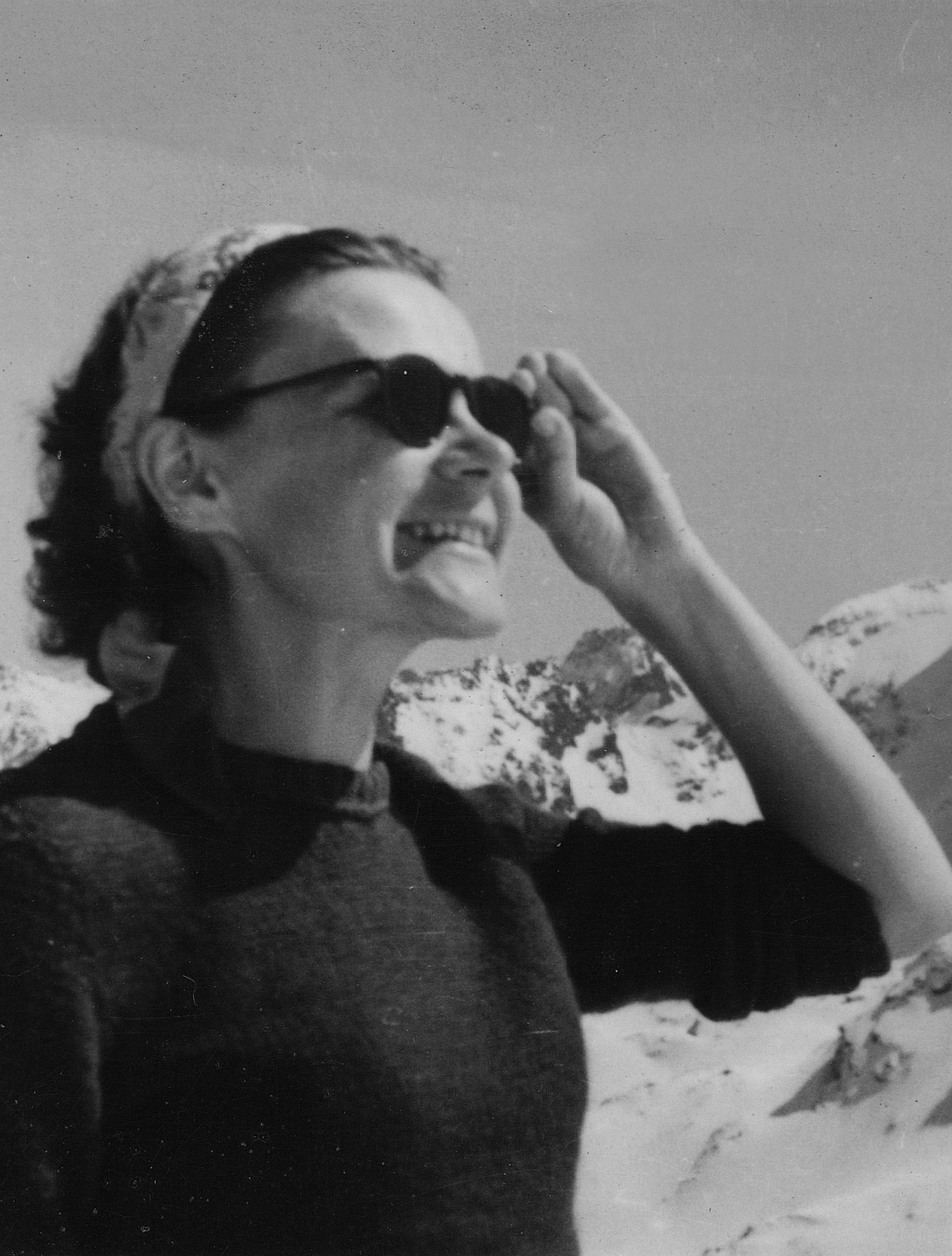“I do what wood dictates to me,” the artist used to say. A retrospective exhibition of works to celebrate the 100th birthday of a sculptor who loved wood.
Agata Smalcerz, director of Galeria Bielska BWA:
2019 marks the centenary of Antoni Rząsa's birth. On this occasion, a retrospective exhibition of the artist's work will be presented in the entire space of Galeria Bielska BWA. The works come from Galeria Antoniego Rząsy, the artist's musem in Zakopane which is housed in the building erected by Rząsa himself at ul. Bogdańskiego 16a. The museum is run by his son Marcin, also a sculptor, along with his wife, Magda Ciszewska-Rząsa, a photographer.
Born in Futoma near Rzeszów, Antoni Rząsa began to attend the College of Wood Industry in 1938, but his education was soon interrupted by the outbreak of the Second World War. He finally graduated in 1952, aged 33, and was immediately employed as a teacher in the college by the Principal Antoni Kenar. He stopped teaching in 1973 and died in Zakopane in 1980.
In the 1960s, Antoni Rząsa became one of the most recognizable Polish sculptors. Inspired by folk art, his wooden sculptures were characterized by the simplicity of form. The artist said: "Through my sculpture, I strive to reflect various human emotions – joy, sacrifice, love, wisdom, suffering, despair, horror. Sometimes, my characters express a silent question: who is this person and what is the purpose of their passing. I call (...) for human dignity, which is nowadays becoming ever so scarce.” *
The sculpture exhibition will be accompanied by a display photographs by the artist's wife, Halina Rząsa, showing the landscapes of Futoma and Dachnów.
The exhibition will be curated by Marcin Rząsa
Comments about Antoni Rząsa:
Halina Micińska-Kenarowa – writer, teacher (1980):
A deeply religious sculptor, Antoni Rząsa was the first artist in post-war Poland who dared to challenge the traditional church iconography by supplementing the dull and sugar-coated 19th-century conventions with his own experience of agonizing pain. This is exemplified by a “scandal” in the Podhale region involving his sculpture of Crucified Christ which was placed on the grave of Kenar in Zakopane in 1959, when a crowd of angry believers attempted to remove the "unorthodox" Christ from the cross. (...)He deliberately used very modest means of expression: dark-stained wood, frontal figures, straight vertical, horizontal and diagonal lines, expressionless Byzantine faces contrasted with arms raised in an abrupt gesture, smooth surfaces juxtaposed with a sudden realistic detail, such as the heavily veined hands of a working man – a technique calling to mind the work of Stoss or Dürer. The humbler the means of expression, as if they were self-imposed commandments, the more powerful the message: petrified pain, self-effacing pain, melancholy pain, vexing pain, heroic and defiant pain, pain turning a man into a ragged corpse. This obsession calls to mind drops of water falling constantly on the same spot in a dark, secluded cave. Some of the sculptures resemble stalactites, others tree boughs blown away by a mountain gale. Each work is a prayer and offering, penance and atonement.
Stay with God, Brother Antoni, God's Lumberjack.
Dorota Folga-Januszewska – art historian, museologist :
The work of Antoni Rząsa constitutes one of the most important chapters in the history of Polish art of the second half of the 20th century. Stretched between a tree and the sky, his oeuvre was always controversial, whether he experimented with the subject matter or communed with God. (…)
His sculptures have been shown in different countries, always astonishing the viewer with a unique portrayal of suffering, faith and humour. His Crucified Christs and weeping Marys contain a wealth of captivating gestures and ambiguities, making them slightly reminiscent of Maurice Béjart's avant-garde ballet dancers. The wood was obedient to him, and the viewer always curious about the tragedies and hopes in the immortalized hands, arms, bodies and thorns.
Wawrzyniec Brzozowski – art historian, translator, Kraków, June 2004:
Rząsa worked in wood, only in wood; and wood is an exceptional material. Once alive, a piece of wood has its own story to tell, its own life to share (...). Rząsa's work is filled with profound respect for every piece of wood and its origin, which gave it its particular shape and properties. “I do what wood dictates to me,” he used to say. “ I take a piece of wood and stare at it, until I see what I need to see. The shape of my future sculpture depends largely on that particular kind of wood.” (…)The artist’s work may contain traces of the Romanesque and early Gothic periods with all their raw dignity, the rustic warmth of roadside shrines, the odd overly painful expressionist grimace, or even Henry Moore (Rząsa’s early period), but in fact, none of these defines his art. (...) Rząsa’s art is Rząsa’s art, full stop.
Małgorzata Mostek – cultural anthropologist:
Despite frequent references to the teachings of the Church, Rząsa never explicitly professed his religion, and his sculptures often diverged from the canons of Christian art. In fact, Antoni used the evangelical figures as allegories of suffering experienced by ordinary people. Rather than the smooth faces of the Madonnas or gentle countenances of the suffering Christs, Rząsa preferred to portray human suffering while brushing aside the divine aspect. Was that the thing that made his work so controversial?
The centenary of the artist’s birth
 Antoni Rząsa was born on 26 February, 1919 in Futoma in the Sub-Carpathian region and died on 26 January 26, 1980 in Zakopane. To commemorate the 100th birthday of the artist, Galeria Antoniego Rząsy in Zakopane is organizing a number of events. These include a retrospective exhibition at Galeria Bielska BWA in Bielsko-Biała, an exhibition of Rząsa's furniture in Zakopane, an exhibition at the Hasior Gallery in the Tatra Mountains Museum, an academic conference, photographic plein-air session in Rzeszów, and many meetings. The Gallery in Zakopane has published two important biographies of the artist – Antoni Rząsa (1999) and Antoni Rząsa. Prace (2004), as well as Listy do brata (2003) – a selection of letters to the artist's brother Józef written over a period of more than thirty years.
Antoni Rząsa was born on 26 February, 1919 in Futoma in the Sub-Carpathian region and died on 26 January 26, 1980 in Zakopane. To commemorate the 100th birthday of the artist, Galeria Antoniego Rząsy in Zakopane is organizing a number of events. These include a retrospective exhibition at Galeria Bielska BWA in Bielsko-Biała, an exhibition of Rząsa's furniture in Zakopane, an exhibition at the Hasior Gallery in the Tatra Mountains Museum, an academic conference, photographic plein-air session in Rzeszów, and many meetings. The Gallery in Zakopane has published two important biographies of the artist – Antoni Rząsa (1999) and Antoni Rząsa. Prace (2004), as well as Listy do brata (2003) – a selection of letters to the artist's brother Józef written over a period of more than thirty years.
Galeria Antoniego Rząsy in Zakopane
Opened on 21 July, 1976 at ulica Bogdańskiego 16a in Zakopane, the Gallery is a creation of Antoni Rząsa and his wife Halina. Today, the Gallery belongs to the Rząsa family – the three generations of artists, travelers, teachers and students.
Visit the Gallery website >>
 Halina Rząsa (1924–1980) – born in Kraków. A graduate of the University of Nursing and Midwifery. Due to health problems, she moved from Kraków to Zakopane, where she began her adventure with photography and eventually married Antoni Rząsa in 1965. Halinka was a woman of great culture and wisdom – this also included worldly wisdom (...) In her marriage with Antoni, she was the brains behind all the artistic and economic initiatives, as well as being a living chronicle of her husband's work (...). (Józef Nyka)
Halina Rząsa (1924–1980) – born in Kraków. A graduate of the University of Nursing and Midwifery. Due to health problems, she moved from Kraków to Zakopane, where she began her adventure with photography and eventually married Antoni Rząsa in 1965. Halinka was a woman of great culture and wisdom – this also included worldly wisdom (...) In her marriage with Antoni, she was the brains behind all the artistic and economic initiatives, as well as being a living chronicle of her husband's work (...). (Józef Nyka)
* All the photographs and quotes have been adopted from the website of Galeria Antoniego Rząsy.
Marcin Rząsa – sculptor. Born in 1965, son of Halina and Antoni Rząsa, graduate of the Antoni Kenar Secondary School of Visual Arts in Zakopane. In 1985, he became a student of the Academy of Fine Arts in Kraków; after a year he moved to the Academy of Fine Arts in Warsaw where he studied under Professor Jan Kucz and obtained a Master’s degree under the academic supervision of Professor Grzegorz Kowalski in 1991. He also completed a post-graduate course in the department studio of J. Jankovic at the VSVU (1994-95). He began running Galeria Antoniego Rząsy in Zakopane in 1986. He has been the president of the Antoni Rząsa Foundation since 1991. His work has been shown at numerous exhibitions in Poland and abroad.
Vernissage: Friday, 26 April, 6 pm.
